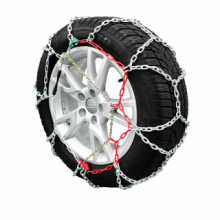
Select your Model
| Model | Year | hiddenanno |
|---|---|
| CHEROKEE (XJ) | 1983 >> 2001 |
| RENEGADE Closed Off-Road Vehicle (BU, B1) | 2014 >> . . . |
The vacuum pump is a mechanical device used to create and maintain the vacuum: to fulfill the purpose for which it is designed, the vacuum pump sucks the gas contained in the vacuum chamber, to which it is connected, with the help of some pipes. This device is located near the engine head, usually placed on the right side.
Vacuum pumps are commonly used for the implementation of devices such as the EGR, the turbo, the secondary valve command and the brake booster. These pumps are very important, especially in the operation of the braking system of vehicles equipped with diesel engines, which are not provided with the throttle valve in the intake duct, which is useful for creating the vacuum to operate the brake booster.
The vacuum pumps that produce the vacuum are mechanically driven and are controlled by special belts, from the service belt, directly from the camshaft or from the alternator.
The different types of vacuum pumps are:
- Diaphragm pumps, which represent the oldest type;
- vane pumps;
- Tandem pumps, which are mounted on a small driven shaft and governed by gears of the camshaft. They are called Tandems for their dual function of pre-fuel pumps and vacuum pumps.
Symptoms and problems of a vacuum pump.
The first symptoms of deficiency of the vacuum pump occur naturally in braking operations: loss of braking effectiveness, more time in the execution of a brake, hard brake pedal. All these are clear symptoms of the failure of the vacuum pump. However, it must be emphasized that although all these signs of incorrect braking are present in the vehicle, it is advisable to make sure that all other components of the braking system are fully functional.





